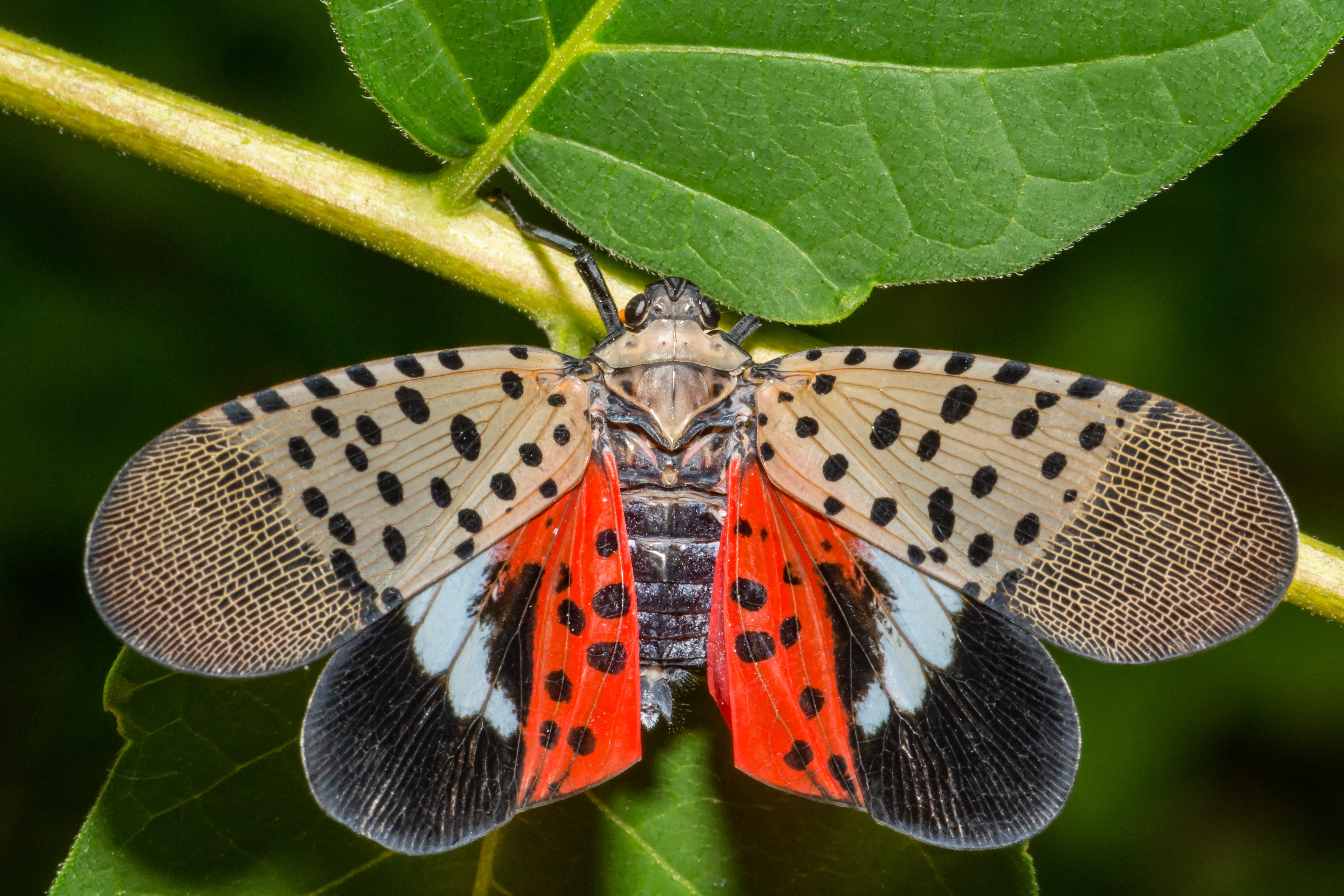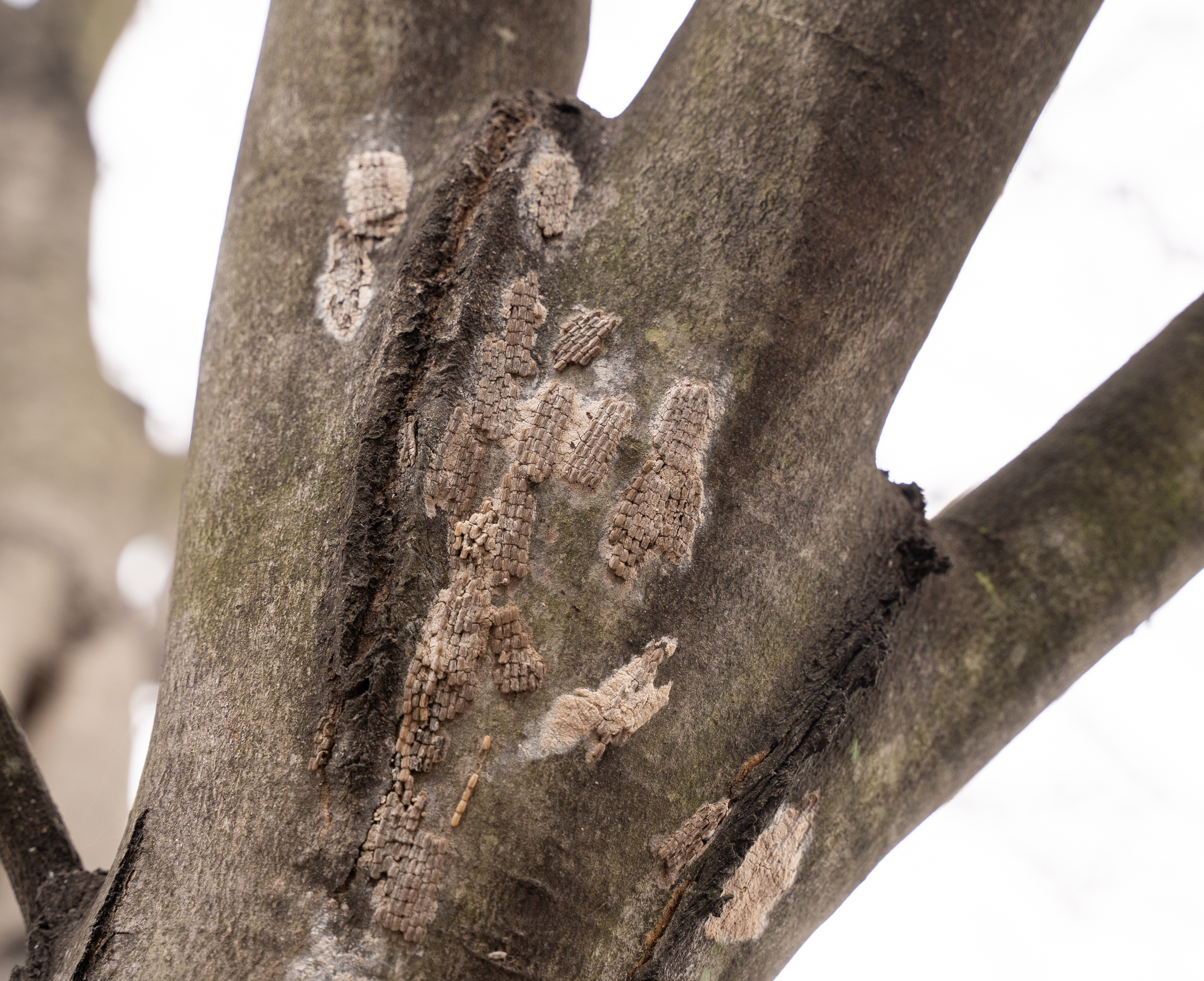Spotted lanternfly is an insect native to eastern Asia that has become an invasive pest in the United States. The spotted lanternfly is a type of insect called a planthopper. It feeds on a variety of host plants. 
Adult spotted lanternflies grow up to 1 inch (2.5 centimeters) long. The adult has forewings that are gray with black spots. The hind wings are red with black spots and partly black and white on the ends. The insect’s abdomen is yellow with black bands. Nymphs (young) are 1/4 inch (0.6 centimeters) to 1/2 inch (1.4 centimeters) long. Nymphs are black with white spots, developing red patches as they mature.
Nymph and adult spotted lanternflies have powerful hind legs, enabling them to jump large distances. Adults can only fly short distances.
Nymphs hatch in May and jump from plant to plant before developing wings. The lanternfly molts to its mature form in July. Adult spotted lanternflies die with the first few freezes of winter. The eggs of the lanternfly survive the winter and hatch in late spring.
Female spotted lanternflies attach egg masses in rows on tree bark and various other surfaces from September through December. They cover the egg masses with a waxy, mudlike secretion. They can lay two egg masses a year, each containing 30 to 50 eggs. 
The spotted lanternfly has a piercing-sucking mouthpart that enables it to feed on the sap of trees and plants. Spotted lanternflies most commonly feed on the Ailanthus, also called the tree of heaven. However, they feed on over 70 different plant species. While feeding, the lanternfly secretes a sugary substance called honeydew. This secretion attracts other insects to the tree and creates an ideal environment for a fungus called sooty mold to grow. The sooty mold can cause a plant to rot, killing trees and reducing crops. The spotted lanternfly poses a threat to apple and grape crops as well as commercial logging in the United States.
The spotted lanternfly is native to China, India, and Vietnam. The first spotted lanternfly detected in the United States was in Pennsylvania in 2014. The insect’s eggs were probably brought to the country in overseas shipments. People have unintentionally transported egg masses on vehicles, crops, and other items, spreading spotted lanternflies to more places in the United States.
To combat the further spread of the insects, experts recommend removing egg masses from trees. They also advise checking such items as vehicles, camping gear, firewood, building materials, and outdoor furniture for insects and egg masses before moving them.
